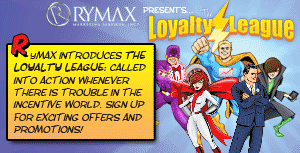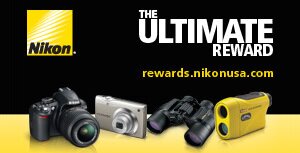Big Picture (Spring 2009)
The Emergence of Engagement
A little over two years ago, representatives from the nation’s top incentive companies, brands and trade media involved with the incentive business convened in New York to discuss the future of the incentive business. At the meeting, there was near unanimous agreement that the emerging trend of engagement and one-to-one communications created a significant opportunity for our field, and that it was time for the industry to work together to bring this message to corporate America in a compelling way. Much has happened since then.
This meeting became the basis for the creation of a formal Task Force known as the Industry Leadership Council – in effect,an advisory council to the Incentive Performance Center, the corporate outreach arm of the industry’s Incentive Federation. Over two-dozen leaders representing brands and incentive companies have signed up, and we are now beginning to see the fruits of their labors. The Incentive Federation has joined an informal coalition of the Human Capital Institute, Peppers & Rogers Group and 1to1 Media® to help educate hundreds of thousands of executives in human resources, general management, sales and marketing on the economics and tactics of engagement.
The goal is ambitious: to create out of the incentive business a broader, higher-level field focusing on engagement, not only of employees, but of customers, vendors and channel partners as well. Companies involved with selling engagement services – such as performance improvement, rewards and recognition, incentive travel, motivational events, recognition programs and customer loyalty – often have been unable to get access to C-suite executives in the same way as the advertising business. Today, a new focus on one-to-one engagement and a shift away from traditional mass-marketing is creating an entirely new opportunity for a field once considered to have had its day in the sun.
Enterprise engagement integrates external and internal marketing in a strategic way, measured by what The Gallup Organization calls the “Human Sigma score,” a mathematical correlation between customer and employee engagement that can have a direct impact on an organization’s bottom line. Gallup research found that public organizations ranking in the top quartile of employee engagement had earnings-per-share growth more than two-and-a-half times greater than organizations that were below average. Similarly, Towers Perrin found that high-engagement firms experienced an earnings-per-share growth rate of 28%, compared with an 11.2% decline for low-engagement firms. A 2009 Corporate Leadership Council/Genesee study found that enterprises that effectively manage employee engagement grow twice as fast as other companies in their fields. It turns out that engaged employees can have a direct impact on engaging customers, whose loyalty and willingness to refer new customers can have a major impact on the bottom line.
How can organizations increase their “Human Sigma” score? Gallup focuses heavily on the leadership capabilities of line management, finding that a company’s score will vary widely between locations depending upon leadership. Other research, such as the Performance Improvement Based Incentive model, as described in the study, “Incentives, Rewards, and Workplace Performance,” (International Society of Performance Improvement for the Incentive Research Foundation) identified other key factors involved with engagement, including:
- Clear objectives – the ability of an organization to communicate its goals and objectives, and how employees can contribute to their achievement
- Task value – or a sense of purpose
- Emotion – how people feel on the job and about the organization
- Support – the degree to which people feel appreciated for their contributions
- Capability – the ability for people to perform
- Feedback – the recycling of information so people can improve their performance.
If the blueprint for implementing an engagement strategy sounds like a good incentive program, you’re right. According to the Incentive Marketing Association’s own curriculum related to effective program design (co-authored by this writer over five years ago with Rodger Stotz, now of Delta Qi consulting), an effectively structured incentive program addresses all of these key aspects of engagement.
The power of this new message emphasizing engagement was highlighted recently by the travel industry initiative that rose up to address the negative publicity related to the business of incentive travel and motivational events. The coalition of travel industry groups organized by the U.S. Travel Association specifically referred to an Incentive Performance Center white paper on engagement to emphasize the significant contribution made by incentive travel and motivational events to organizations seeking to engage their target audiences. While skeptics may wish to debate the motivational role of incentives, incentive travel, or motivational events, no one can deny the overwhelming research supporting the importance of engagement to financial results. Indeed, a Gallup study found that disengaged workers cost the American economy over $380 billion in lost productivity in 2007, even before the recession began. Can the nation afford this waste of productivity?
This new focus on engagement creates significant opportunities for many players in this emerging field, including:
- Full-service performance improvement companies able to address all of the elements of engagement outlined above
- Executive leadership and coaching companies that help organizations train management at all levels
- Training and communication companies that help organizations engage customers, distribution partners and employees on a one-to-one basis
- Technology firms that provide services for engaging customers and employees
- Management consulting companies that help organizations develop strategic engagement plans and measurement processes
- Survey companies like Gallup and others that provide employee and customer engagement research for companies
- Recognition and other internal marketing firms to help align employee communication and behaviors with organizational goals
- Branded rewards, incentive travel and motivational events businesses that help organizations foster engagement through one-to-one communication
- Promotional products used to engage and communicate with key audiences.
Where will the budget come from for engagement initiatives during this economic meltdown? From the huge budgets wasted on mass-marketing that in many cases deliver almost no measureable results. One-to-one marketing and engagement strategies and tactics are far more efficient and measurable because they identify and build relationships with the people most likely to buy or perform – from those who opt-in to receive a marketers’ e-mail newsletters to the distribution partners who participate in targeted incentive programs to the employees who deliver our marketing promises through the way they conduct their work.
Those of you who work for organizations that run traditional incentive programs, stay tuned to an array of new research and white papers coming to you through the Incentive Performance Center’s incentivecentral.org portal, which is being updated with a new emphasis on engagement. Focusing on engagement will put a fresh face on your traditional incentive programs to ensure they have a more tangible impact on the bottom line.
Those of you who supply any of the services outlined above, it’s time to take a fresh look at your website and the way you market and sell your company, and to join the Industry Leadership Council of the Incentive Federation helping to organize this new outreach and research effort.
The economic meltdown has highlighted not only the failure of emphasizing short-term financial results; it has underscored the need for more sustainable models emphasizing the “human sigma” of our organizations that provides the only true path to sustainable success.
Subscription Center
Subscribe to Engagement Strategies Magazine
Update Your Subscriptions



.jpg)


Comments
Show: Newest | Oldest
Post a Comment